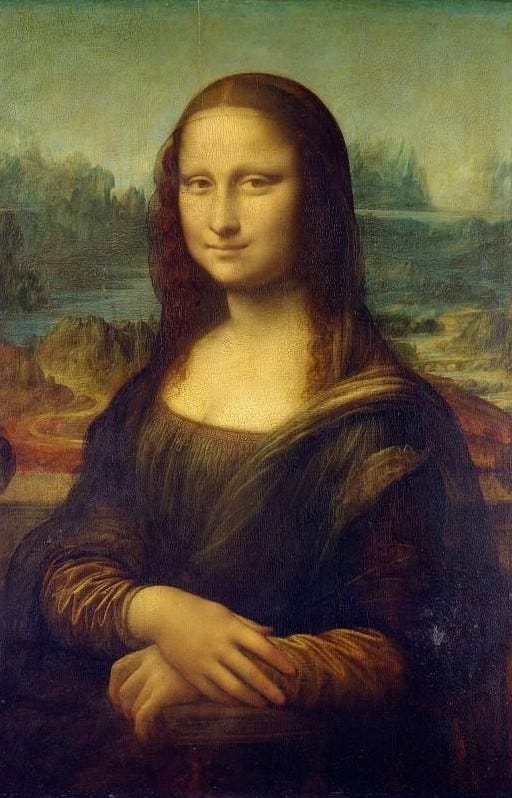Sophisticated art theft not involving weapons, just intellect is something I’ve watched in movies. Taking it off the screen, I have to admire someone able to pull off a feet of such intricacy and intelligence. The planning has to be executed with patience and acumen. Not only is the planning and execution crucial, but so is knowing what is to be stolen and its monetary and cultural value.
There was one such a theft pulled off at the Louvre in 1911 that was done without a great deal of planning or sophistication. Mona Lisa, that unforgettable portrait most identifiable by her smile was the target. Leonardo Da Vinci used that same mischievous smirk of innocence in a few other paintings.
The story of the painting isn’t very illustrious. It was commissioned by the Giacondo family but was refused, as they thought the portrayal was inaccurate and ugly. After Leo’s death, it was acquired by King Francis the first of France, then after the French revolution, it became the property of the people of France and found its way onto a wall in the bedroom of Napolean.
Fast forward about 100 years and Mona is about to get her day under the spotlight. She became the victim of one of the most notorious thefts of its day. For a little comic relief, as I find this a little tongue in cheek. The first 2 suspects were the poet Appolinaire, then his good friend Picasso. Both were set free with the gendarme blushing with embarrassment.
The culprit was actually an employee of The Louvre, Vincenzo Perrugia, a glazier performing some glass work. He simply tucked it under his coat and walked out the door at closing time. Never suspected, he kept it in his apartment for 2 years.
In the period beginning during ww1 the world needed to know details of battles, wins and failures, as well as the capture and death of senior officers and political figures. The press was in the naissance of having foreign correspondents and international wire services. Word was out. News of a little known Da Vinci painting had been stolen from the Louvre. Headlines were made around the world. Because of the obscurity of the painting in the public eye; being stolen from the Louvre was the topic of the day. Yet Mona couldn’t have had better exposure. She became one of the most popular paintings in the world.
Perrugia’s motivation was only in part given to greed. His intention was the repatriation of Mona to her rightful home in Italy. His attempt to sell it to Giavanni Poggi, director of the Uffizi Gallery in Florence did not go well. Mr. Poggi decided she belonged in the Louvre as French royalty purchased it. Perrugia would have gotten away with it had he sold it to someone wanting her to live in their private collection.
Mona relaxed for a couple of weeks and then returned to the Louvre. Perrugia served 2 years for his patriotism. Since then, there have been several attempts to vandalize the lady of the Louvre. On one occasion, her glass encasement was broken and her left elbow slashed with a knife.
Recently I read an article about the Louvre becoming too crowded with fears of damage to the art and the building. On a trip to Paris several years ago, I walked by the glass pyramid but passed on entering, as I had seen photos and videos of the enormous crowds; hoping she would give them a wink. Instead, choosing to peruse the Museé D’Orsay.
Many years ago, when I was a young lad still learning how to hold a brush, I had one of my paintings stolen. I knew the culprit; I considered it a compliment and let it slide.
Mona Lisa by Leonardo Da Vinci public domain



